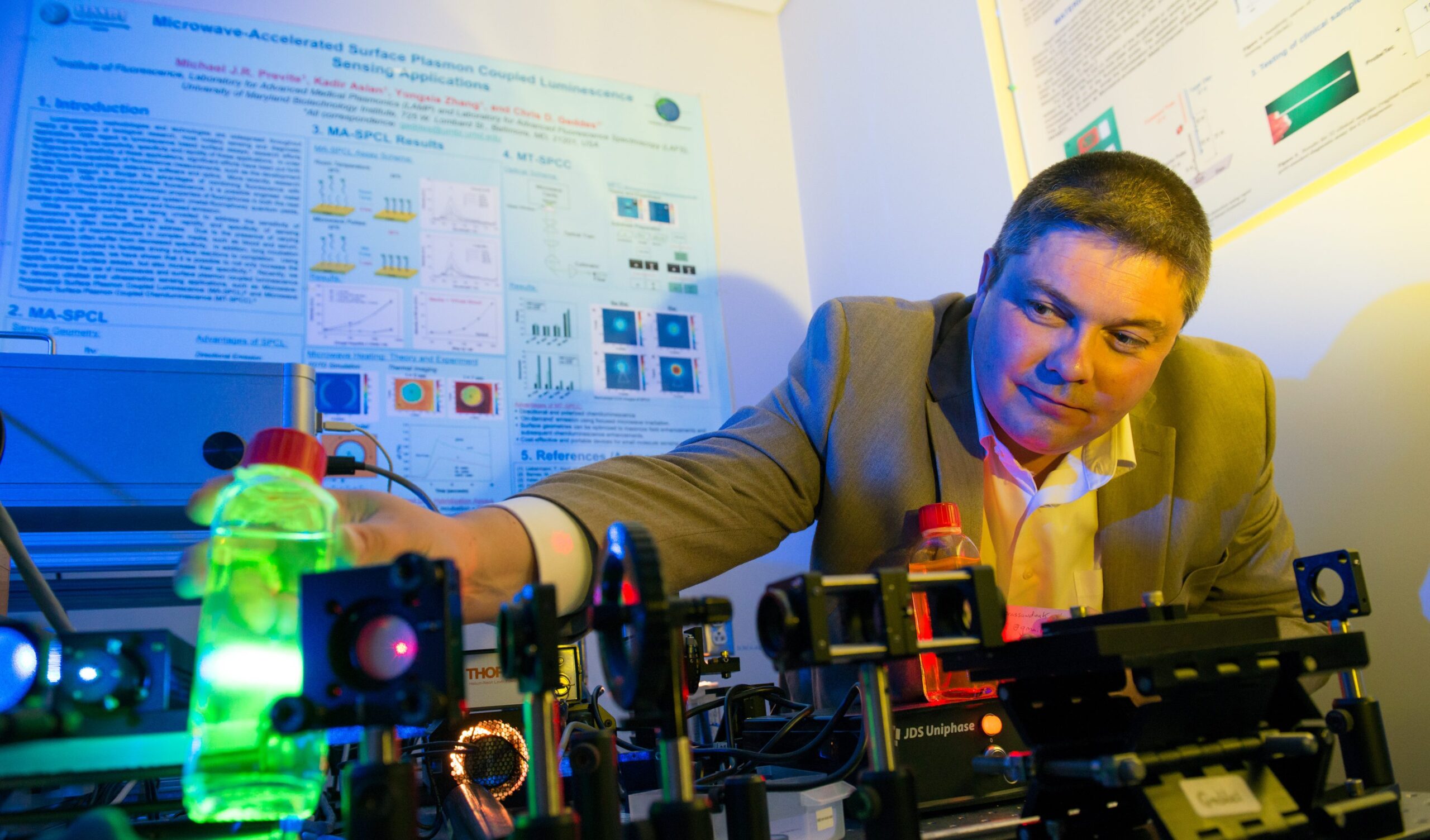Chris D. Geddes, professor of chemistry and biochemistry and director of UMBC’s Institute of Fluorescence, is no stranger to entrepreneurship. He has numerous patents and commercialized products under his belt and has founded multiple startups. But he thinks this one, a new technology for breaking open cells and chopping up their DNA quickly and at low cost, is going to be big.
In 2007, Geddes’s team invented a new fluorescence-based test to detect anthrax that only takes 30 seconds—a major advance. However, the sample preparation for that test, which required breaking the cell open or “lysing” it, still took hours. He took that as a challenge: invent a faster technique for lysing cells. “If you solve that problem, you’re gangbusters,” says Geddes.
That’s exactly what he’s done with his new technology and new company, called Lyse-it™.
The device includes a sample preparation chamber, about the size of a deck of cards, and single-use slides. A pack of ten slides costs less than $100, whereas traditional mechanical lysing techniques cost upwards of $10,000. Energy from a standard household microwave powers the process. The microwaves heat up the water inside cells, causing it to expand. Eventually, the cell membrane can’t take the pressure and bursts. “Think of it like popcorn,” Geddes explains.
The microwave energy also chops up the DNA inside cells. “When we realized the microwaves could do all of it, that was a significant breakthrough,” Geddes says.
The team has calibrated the system, so they know how much energy is required to result in DNA fragments of about a certain size. That’s important, because different follow-up procedures might only work with fragments of certain lengths. For example, polymerase chain reaction (PCR), a ubiquitous lab technique, typically works with fragments between 200 and 500 base pairs long.
Another advantage of the new technology is that it works on all kinds of cells, including bacteria, algae, and human, so there are numerous potential applications. Testing for the presence of disease is one, and an ongoing 1,800-patient clinical trial is assessing the technique’s effectiveness for detecting gonorrhea and chlamydia with Johns Hopkins University and the University of Cincinnati children’s hospital. Each sample test costs around just $1.
The biofuels industry could also take advantage of the Lyse-it technology. Algae produce lipids (oils) that are converted into fuel. Extracting the lipids from the algal cells typically involves several complex steps and some harsh chemicals. Geddes says his new device can potentially do the job in fewer steps and more safely. The research team has proven the new technique works; the question now is whether they can scale it up to make it commercially competitive.
“Starting a company from scratch is a tremendous amount of fun,” says Geddes, but, as a startup veteran, he knows there will inevitably be times when he’ll have to move past major challenges. Still, “Don’t give up the dream,” he urges new entrepreneurs.
More practically, Geddes recommends faculty entrepreneurs seek out advice early, starting with their university’s technology transfer office and connecting with more experienced entrepreneurs, who can help to determine which ideas are most likely to be commercially viable and identify opportunities to grow ideas into commercial ventures. Lyse-it, for example, received $100,000 from a Maryland Innovation Initiative (MII) grant funded through TEDCO to support a proof-of-concept phase for the technology, which concluded in January 2016.
The good news is, “We live in a biotech corridor that is pretty hot for investing,” Geddes says.
Perhaps his most important advice is the simplest: Don’t expect there to be one moment where a new company turns the corner and arrives. It’s a constant process of growth and change, says Geddes, so “enjoy the journey.”
Image: Chris Geddes. Photo by Marlayna Demond ’11 for UMBC.
Tags: ChemBiochem, CNMS, Research

